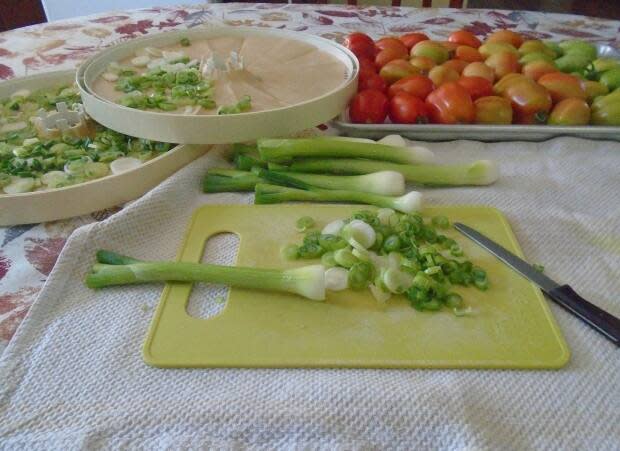Preserving your garden's bounty: Frugal gardening 101 final edition
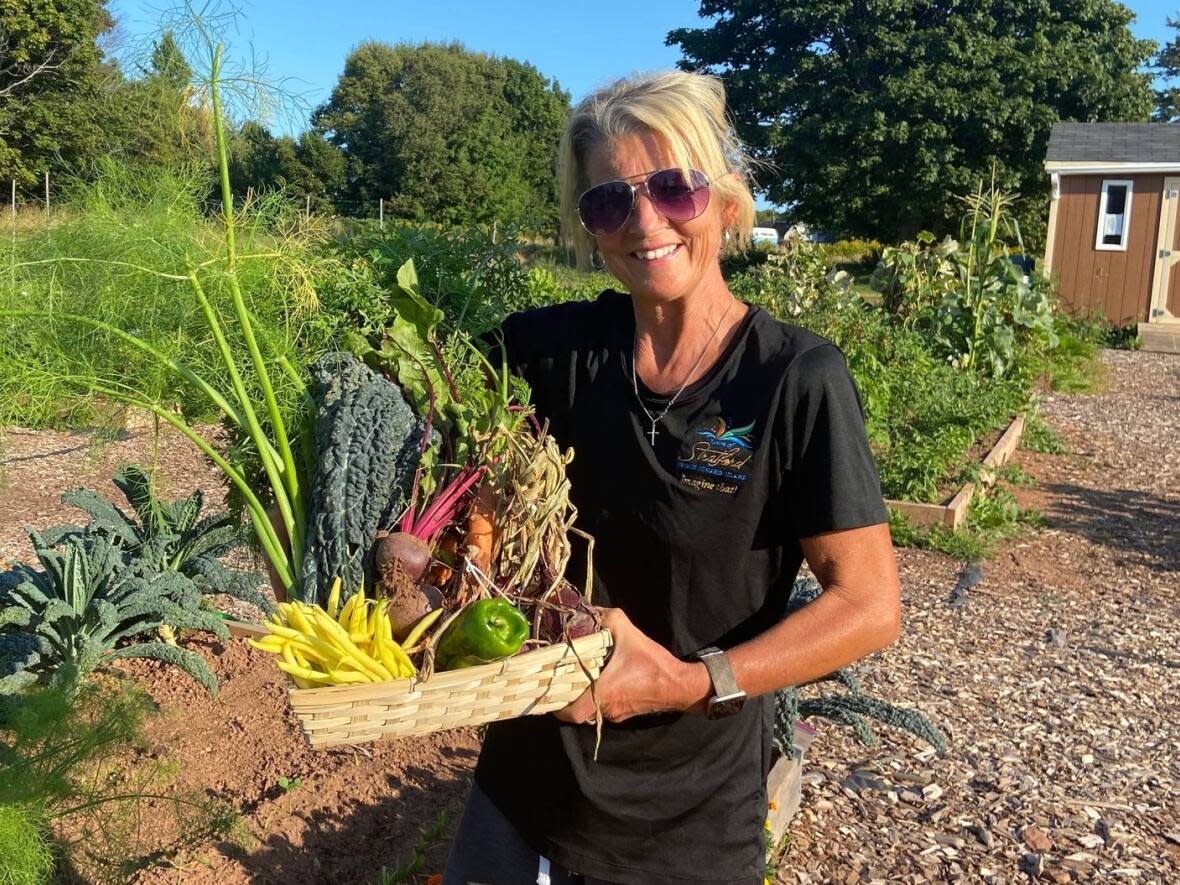
With inflation in P.E.I. hovering around 11 per cent, more and more Prince Edward Islanders turned their hand to trying to grow their own food this summer.
Now let's see how they're preserving their bounty for the long winter ahead.
"I plant three plots of beans to harvest from three times a season," said Heidi Wood, horticulturalist for the Town of Stratford and an avid home gardener.
Here's how she preserves her green and yellow beans: parboil for three to five minutes. Cool on a cookie sheet or parchment paper. Once cooled put in the freezer overnight. "The beans can be left whole or cut up into pieces, I do both," she said. Once frozen, the next day bag them in press-and-seal plastic bags, taking out as much air as you can, then put them in your deep freezer.
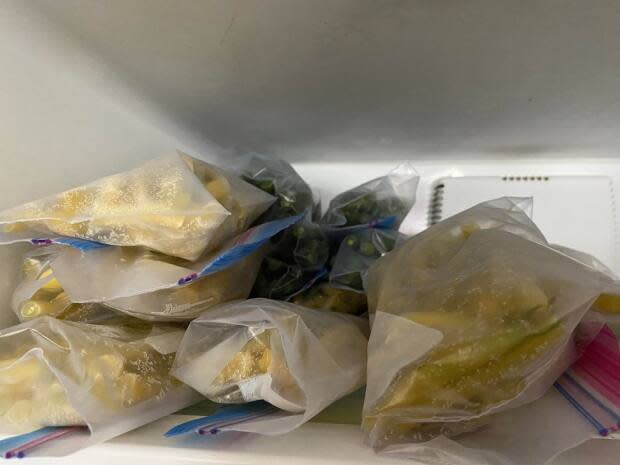
"I had mine last me until February/March," Wood said. It is preferable to use a deep freezer versus your fridge freezer for your bounty, she said, since temperatures in fridge freezers can fluctuate.
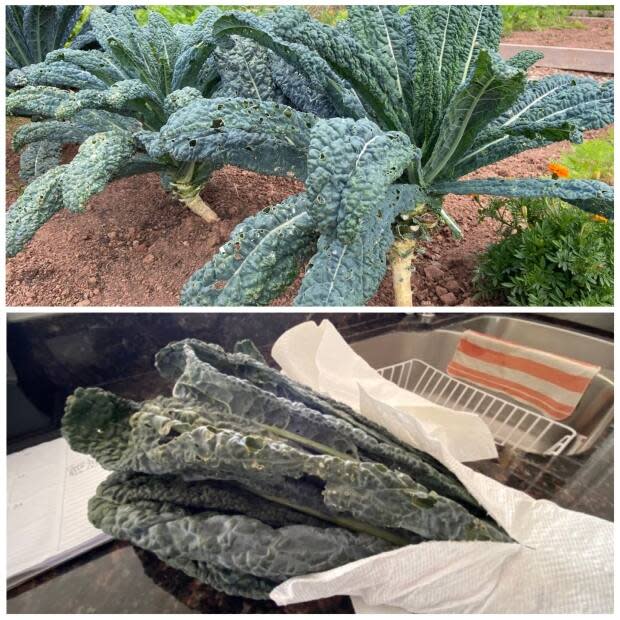
Kale is another leaf veggie that keeps well in plastic bags, Wood said. You do not need to parboil kale first.
"I actually find once I take this out of the freezer it tastes better as kale loves cooler temperatures," she said. Kale will keep in the freezer for two to three months and once thawed, is good to cook or in a smoothie, "but still has that fresh flavour," she said.
Beets are another favourite of Wood's to preserve. "Everyone loves pickled beets," she said.
Beets and beet greens as well as Swiss chard can be frozen in Ziploc bags after being harvested fresh, Wood said. "But for the beet root, best to cook or pickle before freezing or bottling."
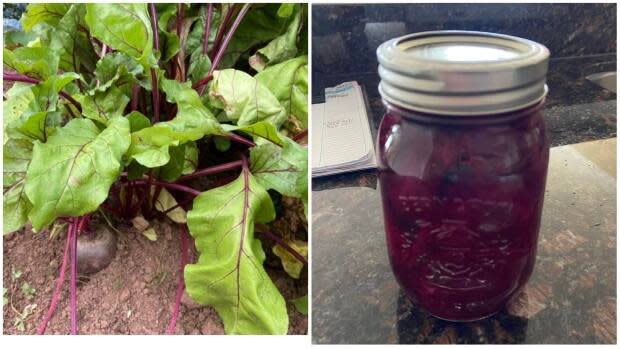
Here is her dad Robert Wood's recipe for pickled beets:
5 lbs.of cooked beets
Syrup:
2 ½ cups of beet water
2 cups of sugar.
2 cups of vinegar.
¼ cup of cloves.
1 tablespoon of pickling salt.
Bit of salt.
Bring syrup to a boil and pour in bottles (she prefers Mason jars, sterilized in the dishwasher) on beet pieces. Use self-sealing lids.
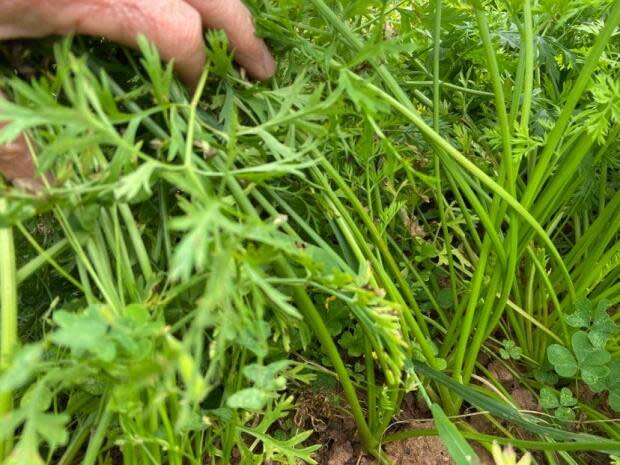
There are a couple of different ways to preserve your garden's harvest of carrots.
"Leave them in the ground as long as you can and then once picked, let dry out for a day and then store them in a cool basement or cellar surrounded with a bit of peat moss or soil to keep them from drying out," advises Wood.
Or, "chop them up, cook them and then freeze them. Should stay at least two to three months if properly bagged up."
We have figured out how much of each item we use and preserve enough to see us through the winter and spring. This way we can give the supermarket a pass. — Norma Millar
Fennel can also be preserved, and Wood loves it in soups and stews.
"All I do is chop it up and put it in Ziploc bags, no parboil required: root, stem and foliage is all so delicious and has a nice licorice flavour," she said.
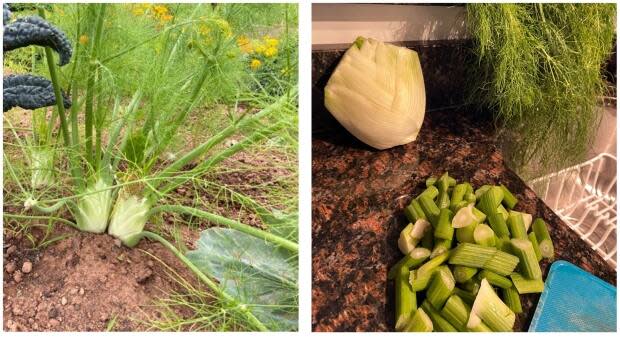
The harvest will actually go on for months, Wood said: with the warm fall temperatures, there is still a lot of growing happening. You can can keep parsnips, carrots, kale and brussels sprouts in the ground into the fall and even over the winter, she said.
"Surround them with mulch such as straw, bark chips, or seaweed to keep them insulated. I left my parsnips in the ground all winter last season and keep harvesting. If you have your own property you can do this and just keep a shoveled path to your garden." That's dedication!
Passionate about preserving
CBC asked readers on its Facebook page here and here how they are saving their garden produce to eat throughout the year. Here's some of what you said.
Rosemary Hill-Miller was making homemade spaghetti sauce and chili to bag and tag for the freezer using her plentiful garden tomatoes.
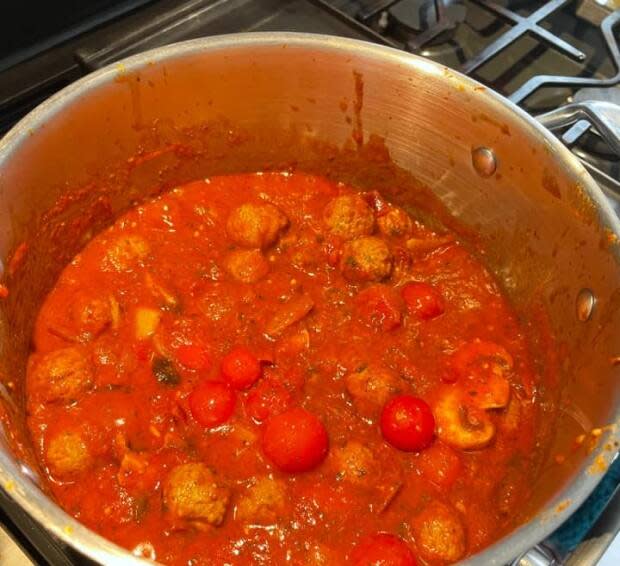
Peter Millman-Savoie didn't grow the tomatoes himself, but bought a large box of them to roast on the barbecue and eat all winter.
Here's his method: cut in half, remove most of the seeds, lay flat on grill, sprinkle with chopped garlic, salt, pepper and drizzle olive oil. Roast over a low flame for about 80 minutes. After that they can be bagged and frozen or simply packed in jars and covered with olive oil. (Jars will keep in fridge at least six months).
"Fire-roasted tomatoes have the very best flavour," he said.
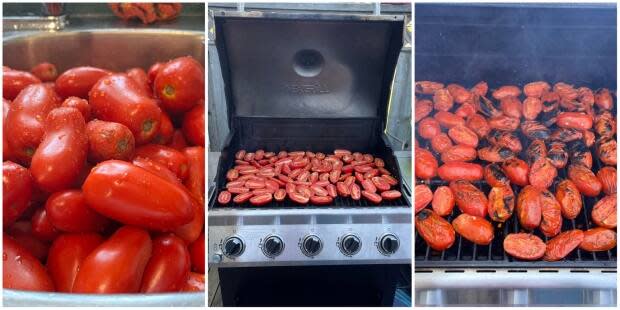
Norma Millar is serious about preserving food from her garden — so serious, her family of two people has four freezers: one designated for fruit, one for vegetables and two for meat (beef, pork, lamb and chicken). There's actually a fifth freezer for baked goods and overflow.
"I dehydrate as much as possible: assorted herbs, spinach, beet greens and onions," she commented on Facebook, adding she also does some canning.
"We grow a lot of our own vegetables and buy farm direct those items we need. We have figured out how much of each item we use and preserve enough to see us through the winter and spring. This way we can give the supermarket a pass."
She said she spends just $20 on average per week at the grocery store.
"We have a saying in our house that, except for coffee, tea, pasta, flour, sugar etc., if it doesn't grow on the Island, it doesn't go on our table," said Norma Millar.
